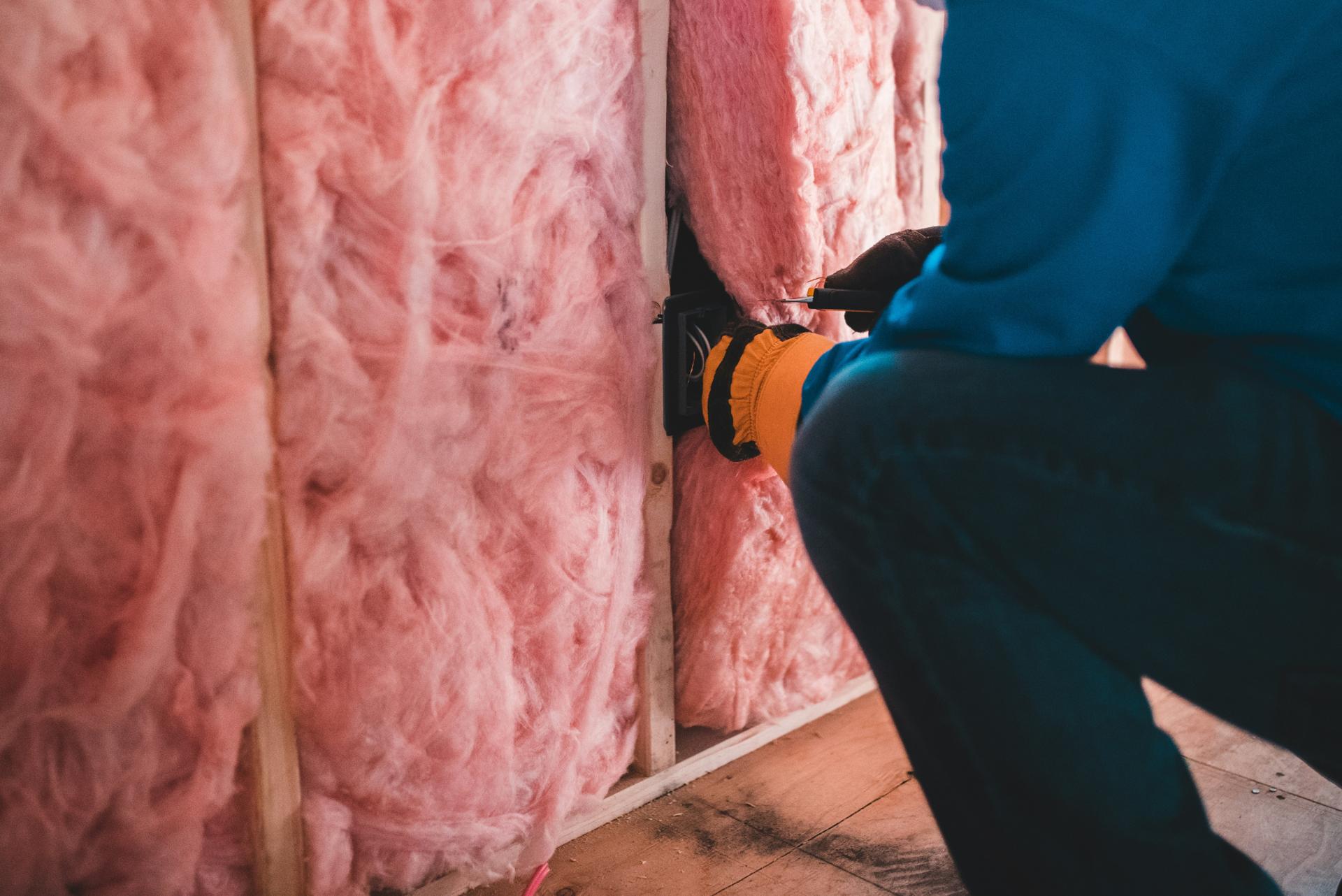Diving Into Reflective Insulation
What is Reflective Insulation and What is it Made Of?
Reflective insulation is specially crafted to bounce back radiant heat. It usually features a shiny aluminum foil melded with other layers like kraft paper, plastic film, or even polyethylene bubbles. This multifaceted combo forms a barrier that thwarts heat transfer, positioning it as a prime candidate for reducing the heat influx in metal buildings during the sizzling summer months.
How Does Reflective Insulation Cut Down Heat Gain?
Unlike traditional insulation that soaks up the heat, reflective insulation kicks heat back towards its origin, effectively keeping it out of your building’s cozy interiors. This is a game-changer for metal structures that otherwise act like heat sponges. With reflective insulation in place, you dramatically slash the amount of radiant heat making its way inside, leading to cooler indoor air.
Reflective Insulation vs. Other Insulation Types
Here’s how reflective insulation stands out:
- Fiberglass Insulation: While it slows down heat transfer by trapping air between fibers, fiberglass doesn’t reflect radiant heat and loses its mojo when wet or compressed.
- Foam Insulation: Spray foam seals air and offers great thermal resistance. However, it’s costly and susceptible to UV damage. Foam lacks the reflective properties vital for sunlight-bathed metal buildings.
- Reflective Insulation: By reflecting radiant heat, it reduces the building’s overall heat burden. When working in harmony with other insulations, it maximizes energy efficiency without bulking up the structure.
The Perks of Using Reflective Insulation in Metal Buildings
Lower Indoor Temperatures During the Summer
Reflective insulation is your go-to solution for cutting down the suffocating heat inside metal buildings. By reflecting the sun’s harsh rays, it drastically drops indoor temperatures, making metal structures in hot U.S. regions bearable. The reflective barrier works tirelessly to keep most of the sun’s energy out.
Boosting Energy Efficiency and Slashing Cooling Bills
One undeniable perk of implementing reflective insulation is the noticeable hike in energy efficiency. With reduced heat gain, your air conditioning system doesn’t have to work overtime, leading to smaller energy bills. Over the long haul, especially for commercial metal buildings, this translates to significant cost savings, fulfilling both economic and environmental goals.
Enhanced Comfort and Productivity
Keeping the indoor climate cool during summer is vital for occupant comfort. For workshops, offices, or storage spaces inside metal buildings, excess heat can hamper productivity and pose health risks. Reflective insulation fosters a more temperate and pleasant indoor atmosphere, boosting overall comfort and productivity.
Installing and Maintaining Your Reflective Insulation
How to Install Reflective Insulation in Metal Buildings
To get the best out of your reflective insulation, follow these steps:
- Preparation: Start by checking your current insulation setup. Remove any damaged sections and scrub the surfaces clean.
- Measuring and Cutting: Measure all target areas like walls and ceilings. Cut the reflective material accurately to fit.
- Installation: Fasten the reflective insulation with the shiny side facing the heat source. Use adhesives, staples, or suitable fasteners.
- Sealing Edges and Joints: Seal all edges and joints with aluminum foil tape to prevent leaks.
- Final Inspection: Check thoroughly to ensure the insulation is snug and gap-free.
Tips for Optimal Performance
To get the most out of your reflective insulation, keep these tips in mind:
- Adequate Ventilation: Ensure your building has enough airflow to help heat escape.
- Combining Insulation Types: Use reflective insulation alongside other forms, like foam or fiberglass, for robust thermal protection.
- Regular Inspections: Watch for wear and tear or moisture buildup that could sap insulation effectiveness.
- Professional Installation: When in doubt, hire experts to make sure the insulation is installed perfectly.
Routine Maintenance and Checks
Routine upkeep ensures your reflective insulation continues to perform well:
- Scheduled Inspections: Inspect semi-annually for any damage, dirt buildup, or moisture. Pay close attention to the seams and frequently used areas.
- Cleaning: Keep reflective surfaces dust-free with a soft cloth to maintain their heat-bouncing properties.
- Repairing Damages: Fix any rips or holes with suitable repair materials to keep efficiency up to par.
- Monitoring Performance: Keep an eye on indoor temperatures and energy expenses—big changes might signal an insulation issue.

